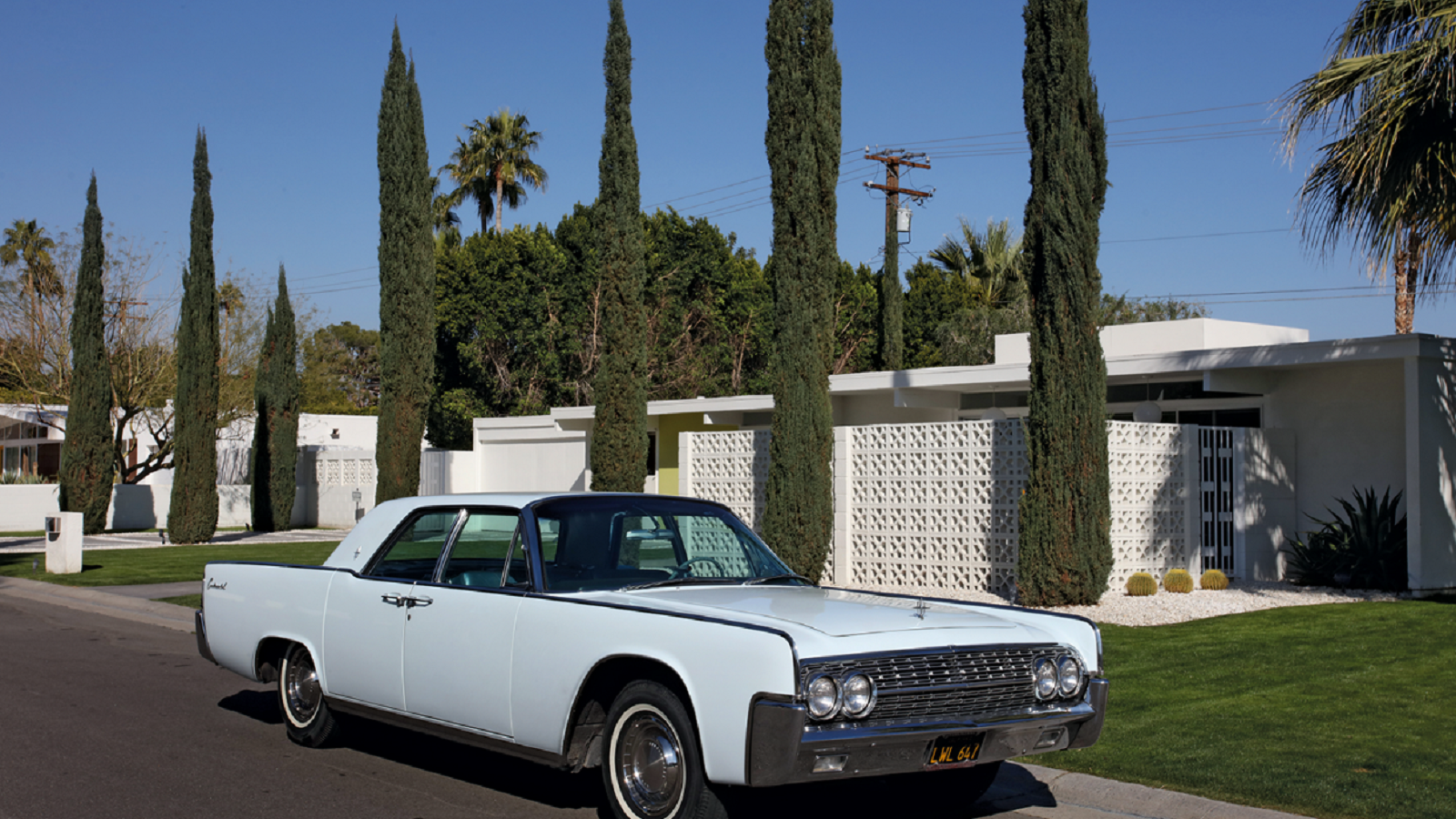
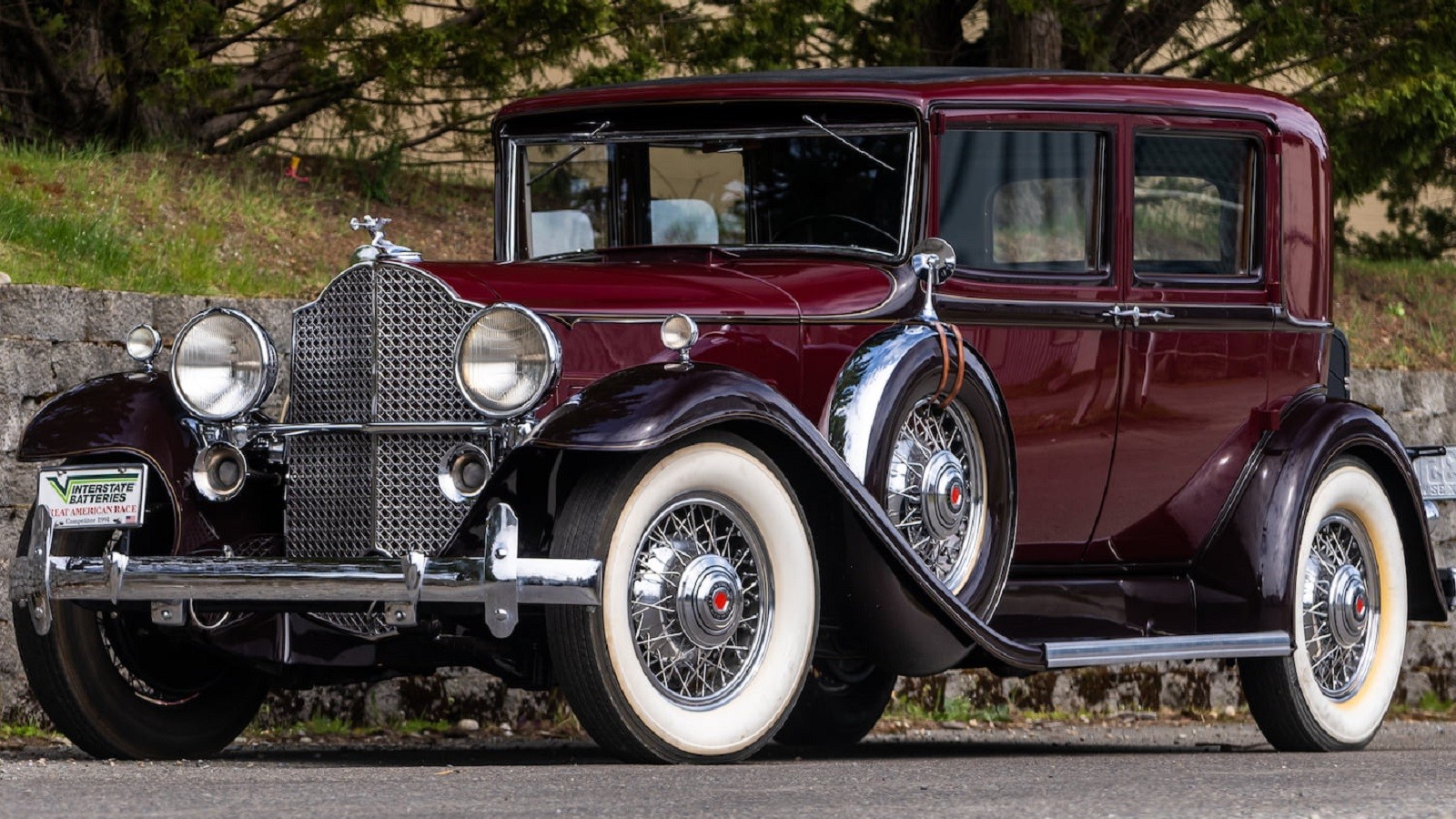
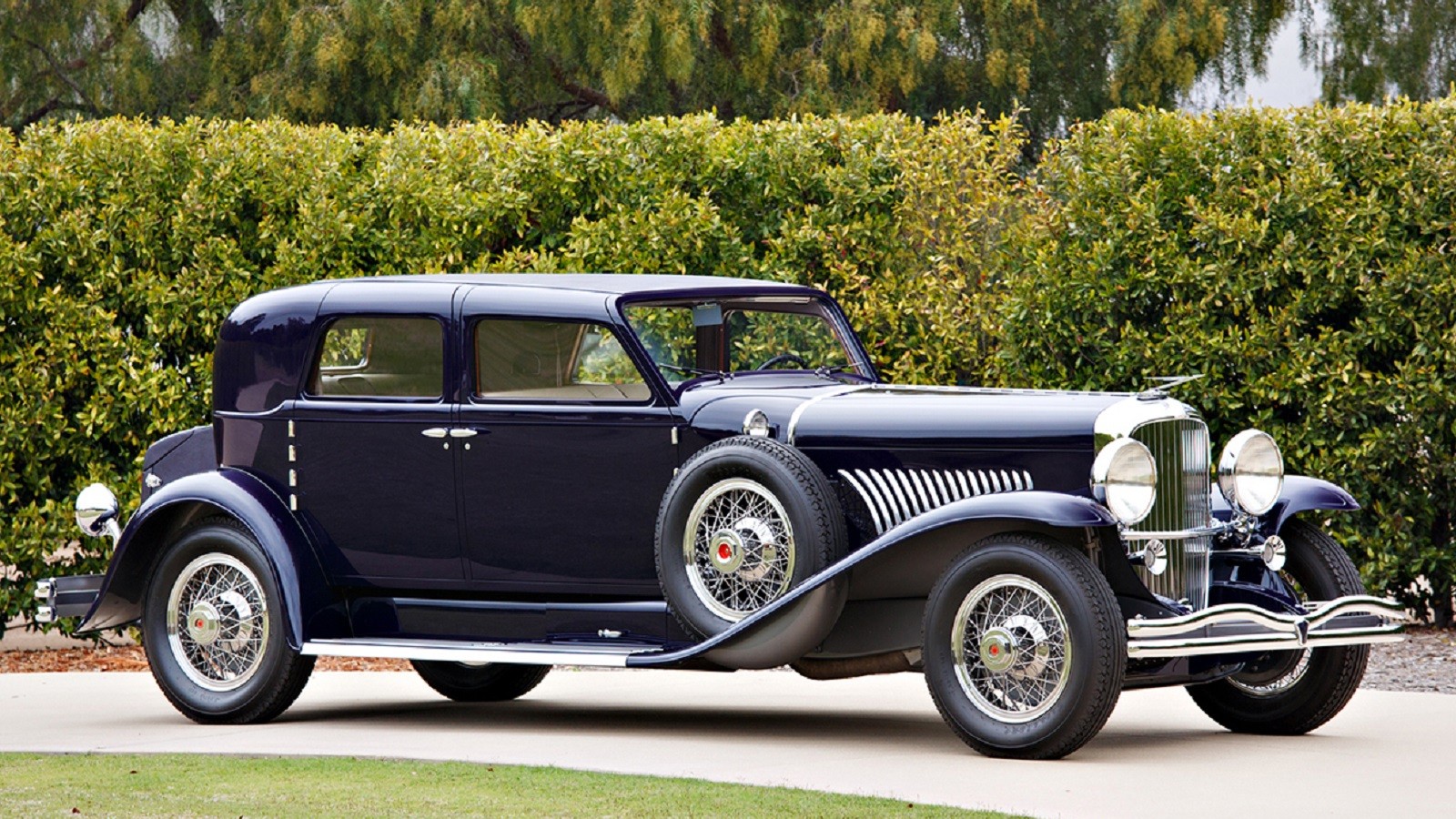
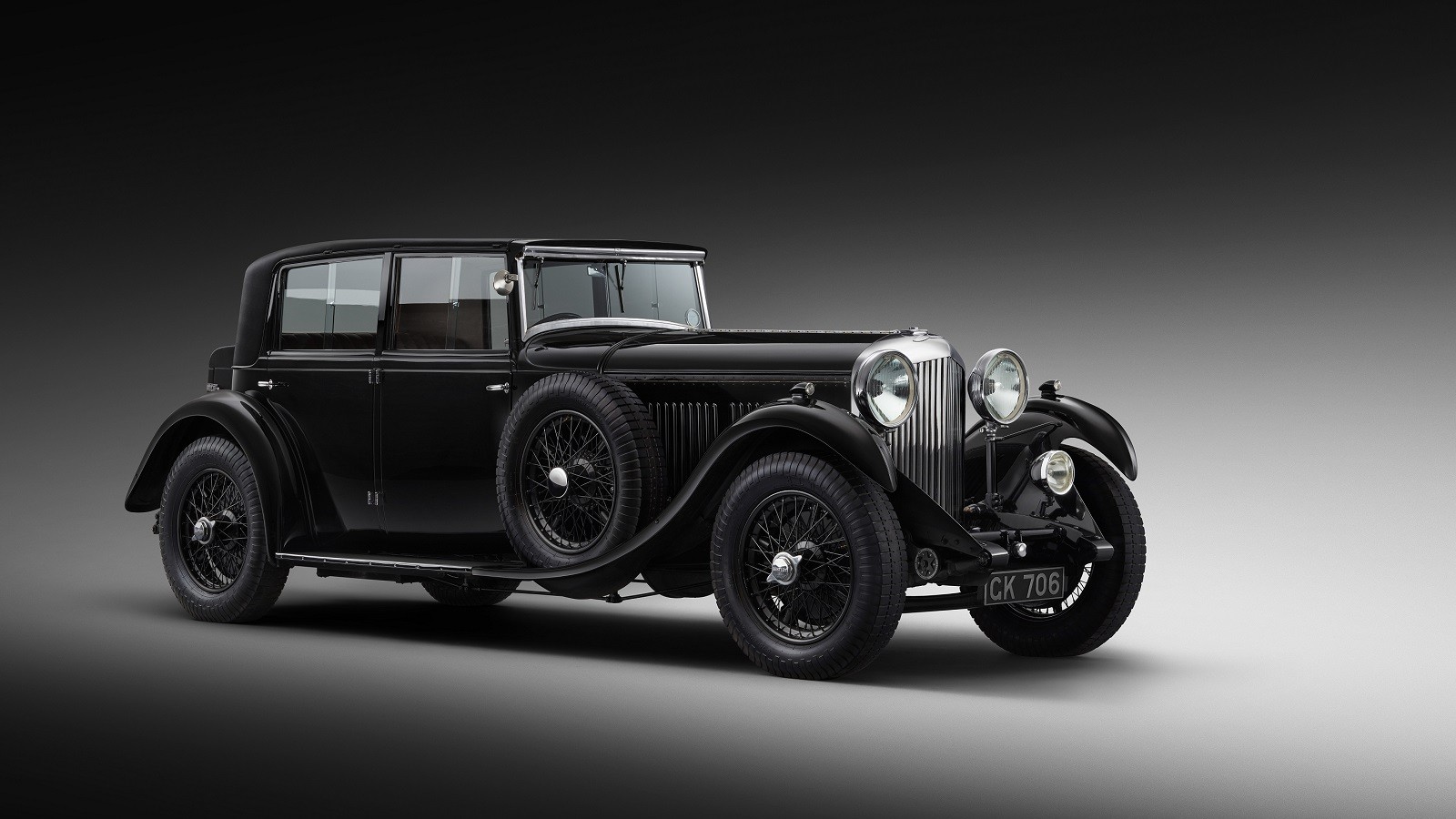
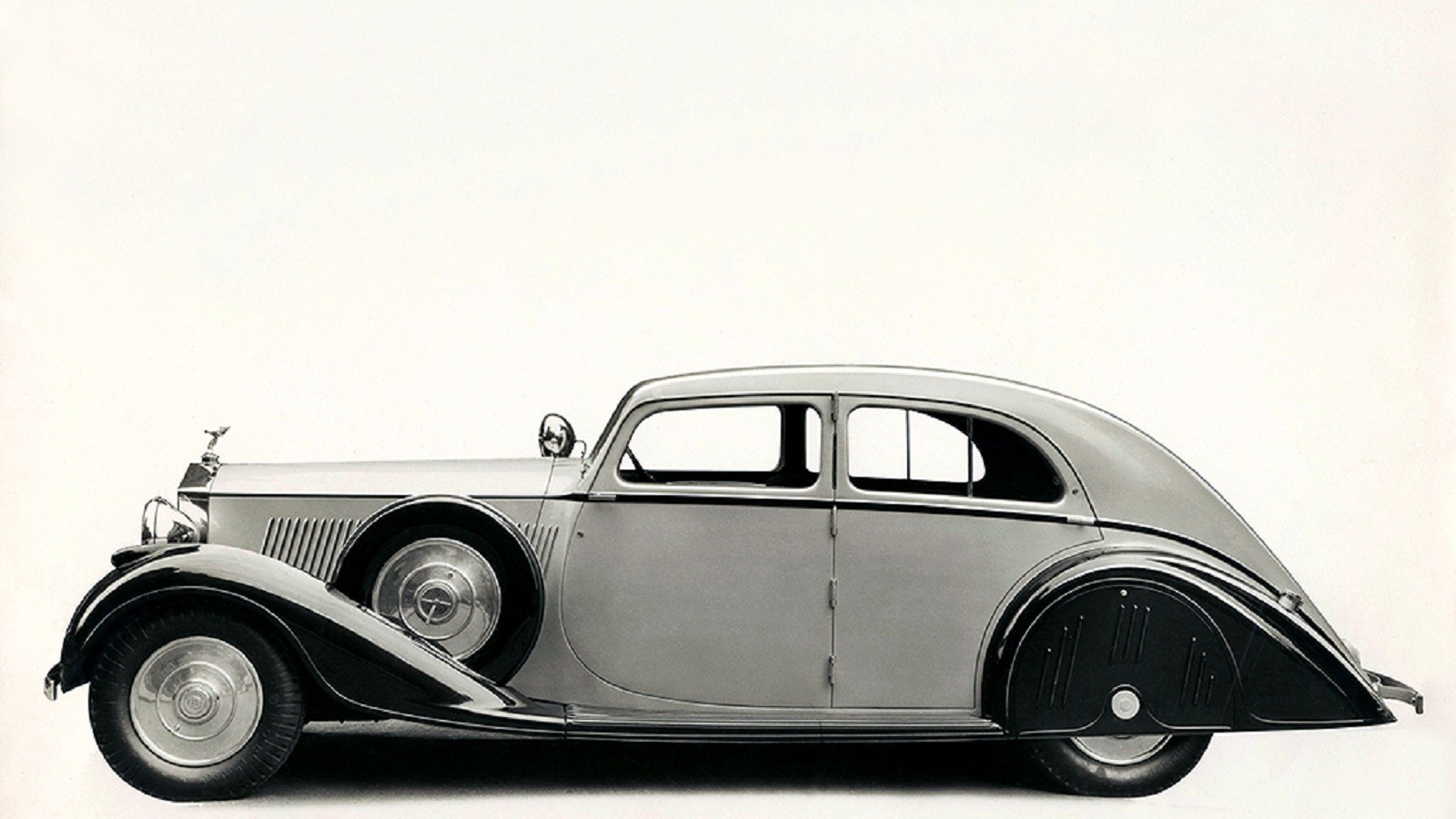
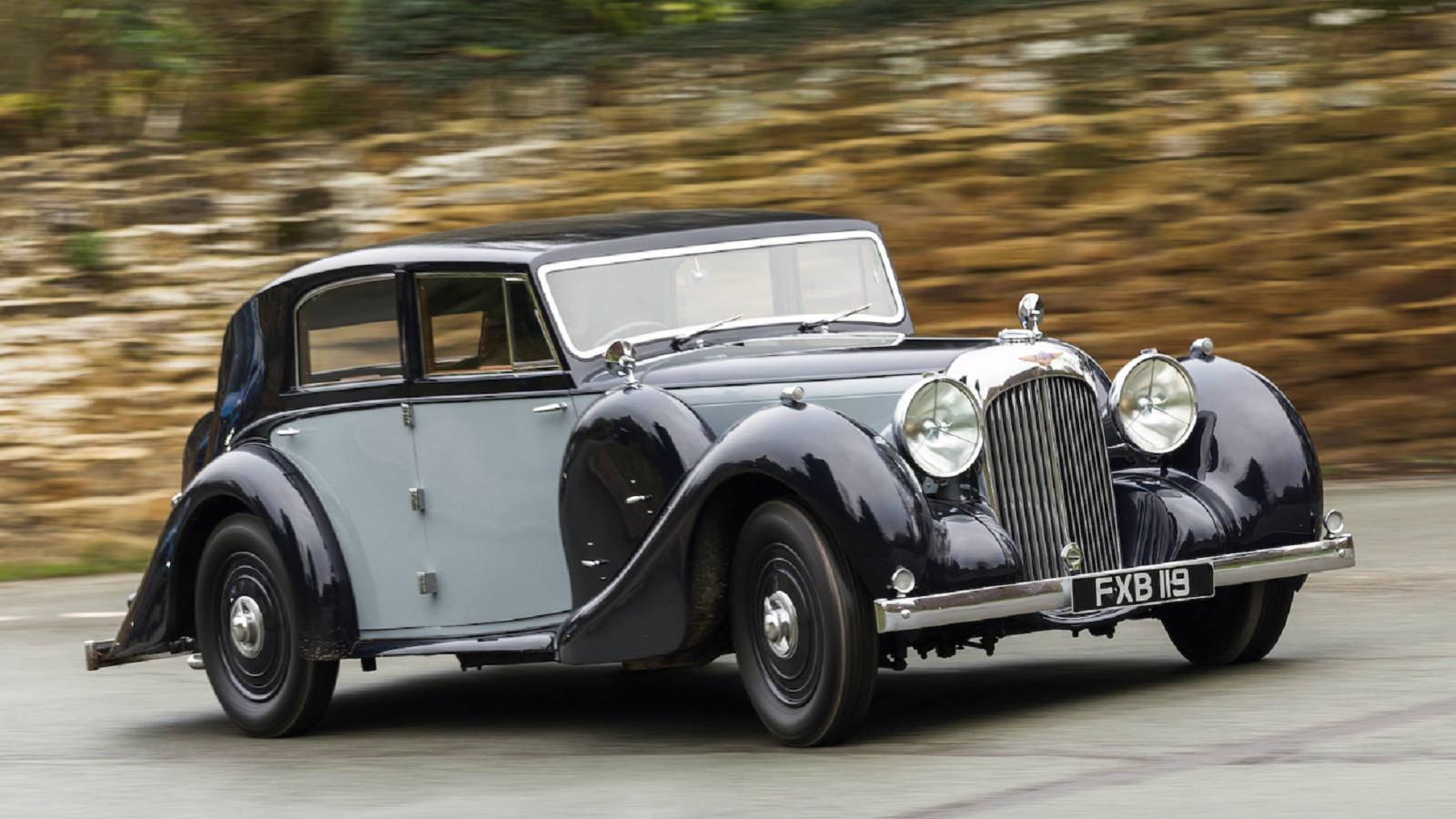
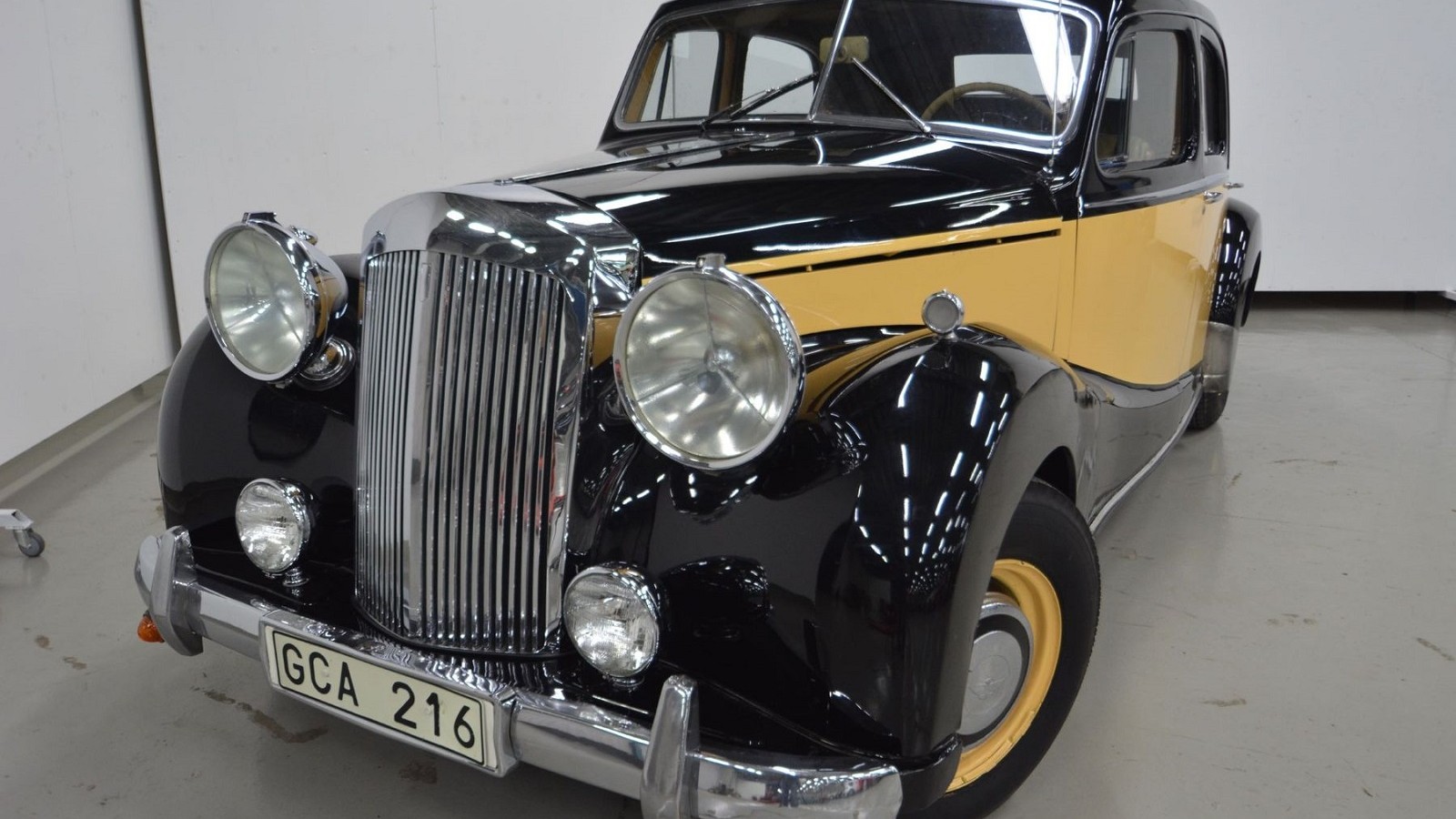
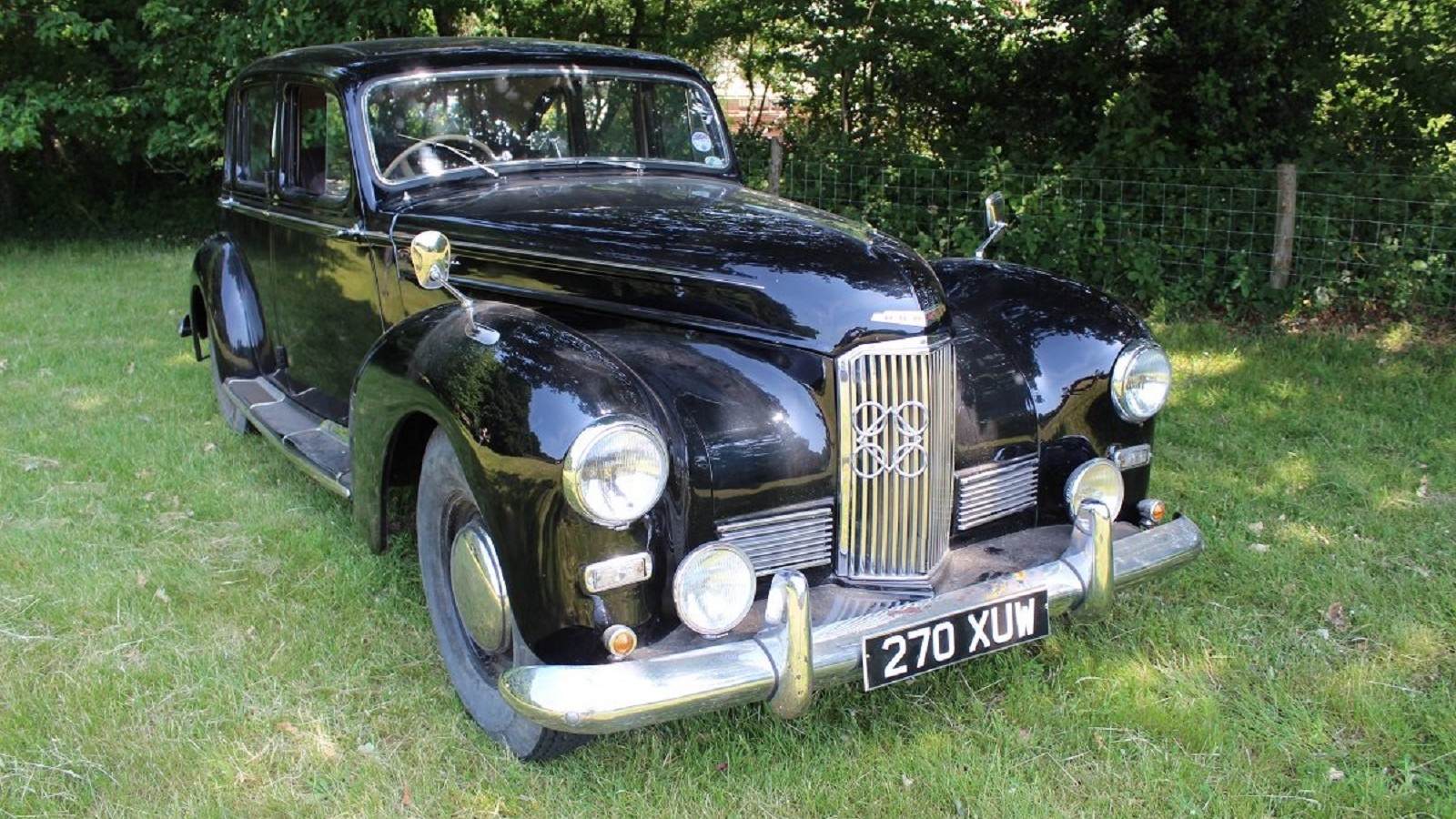
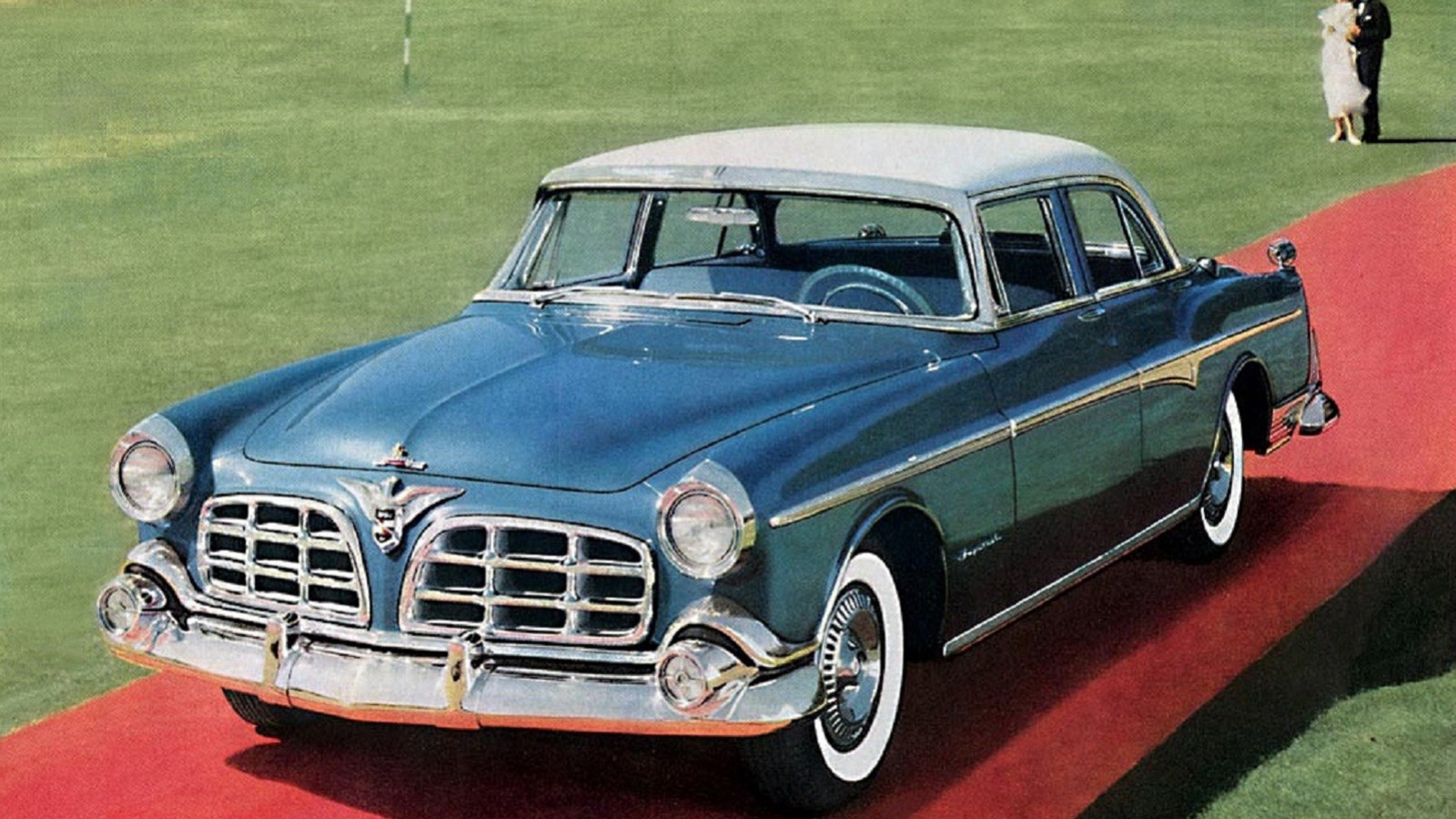
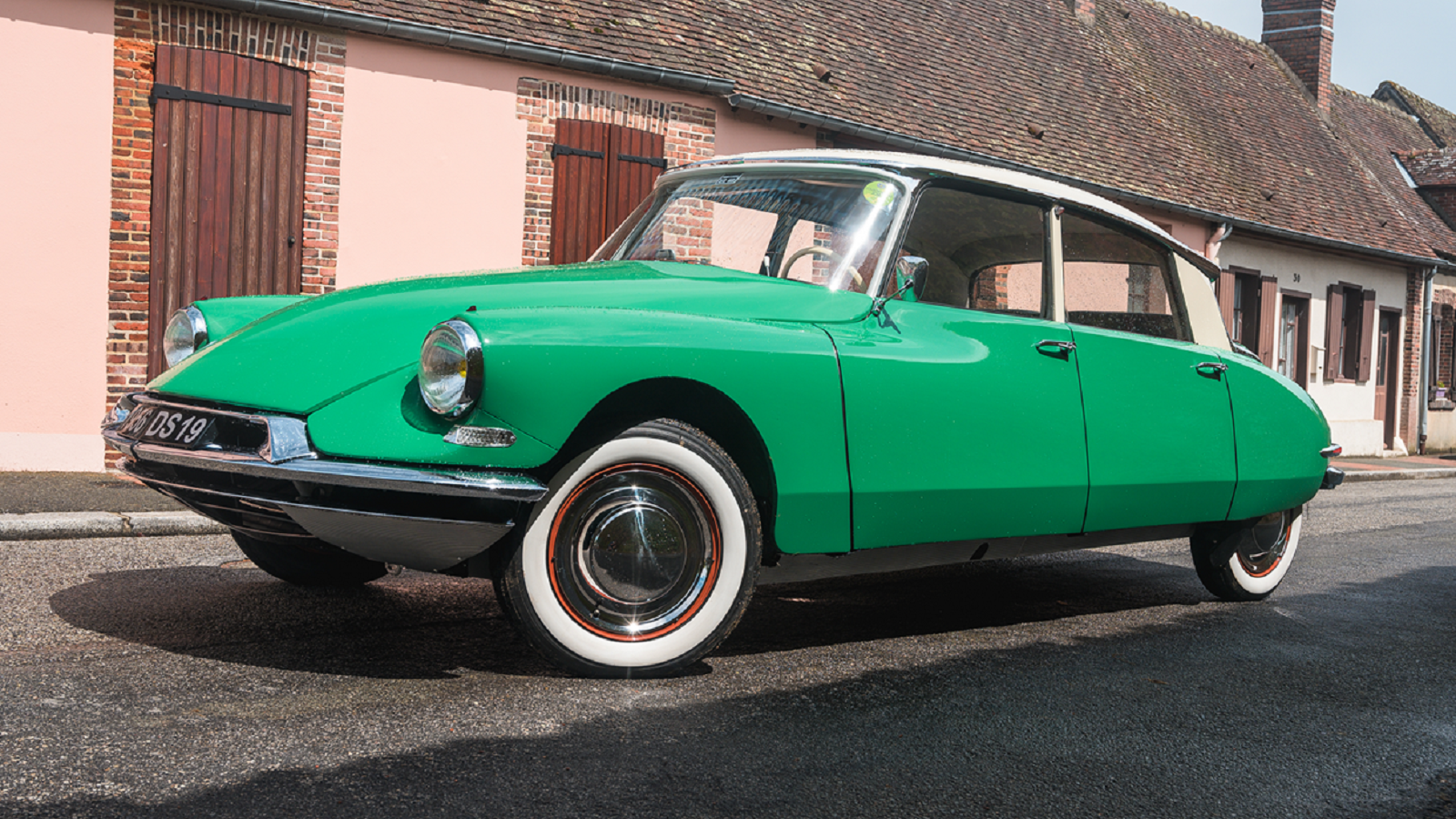

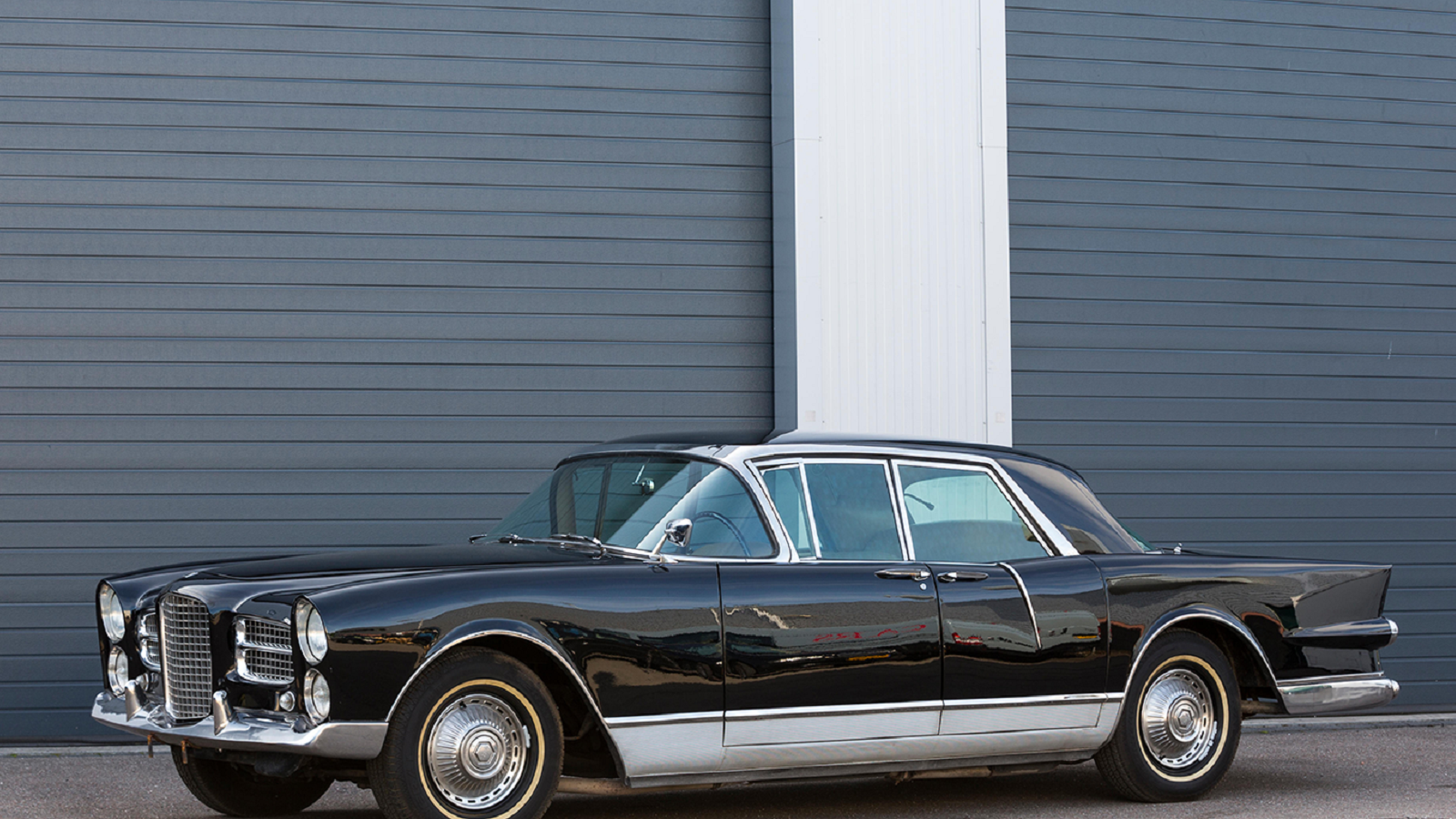
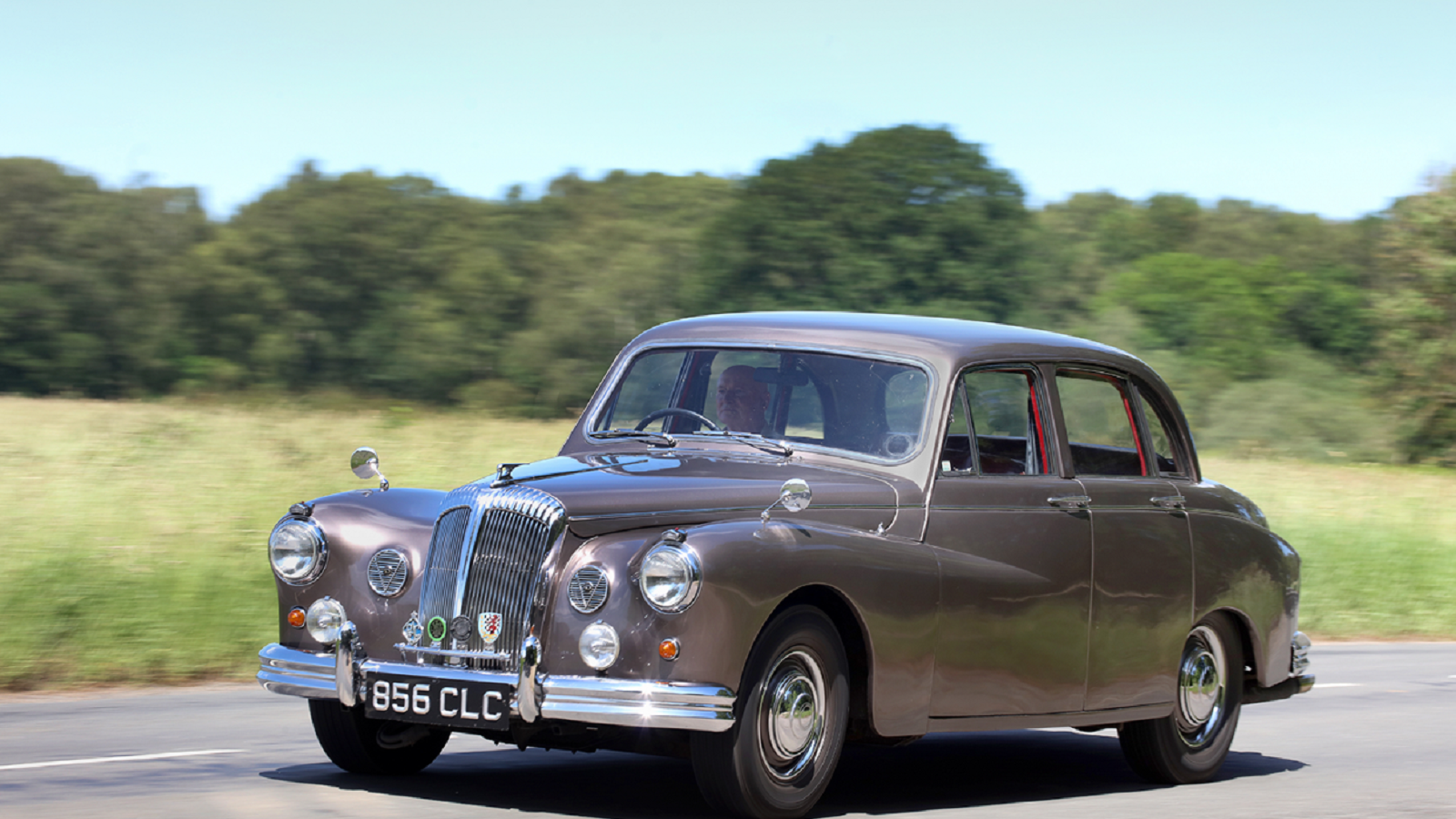


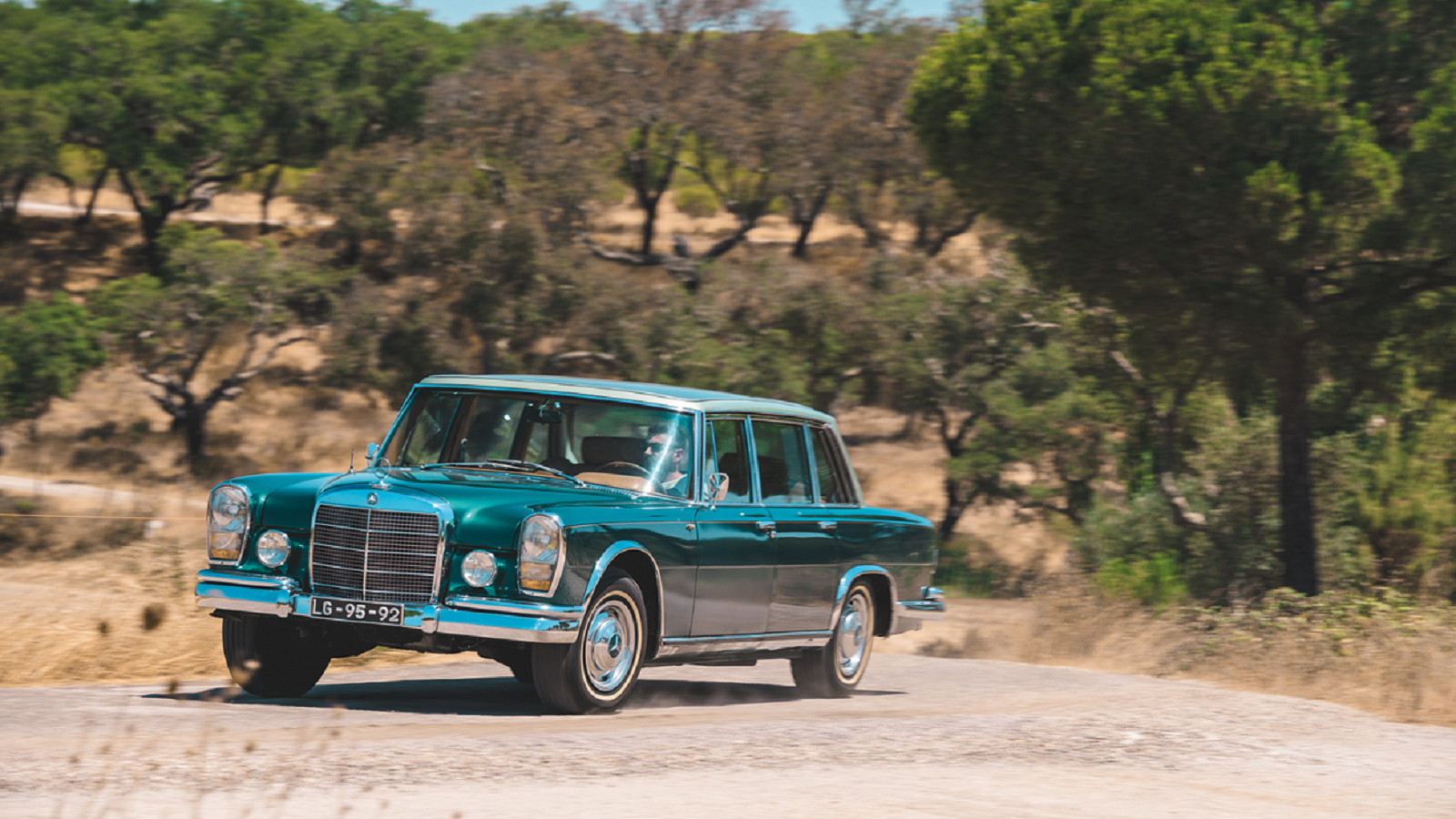
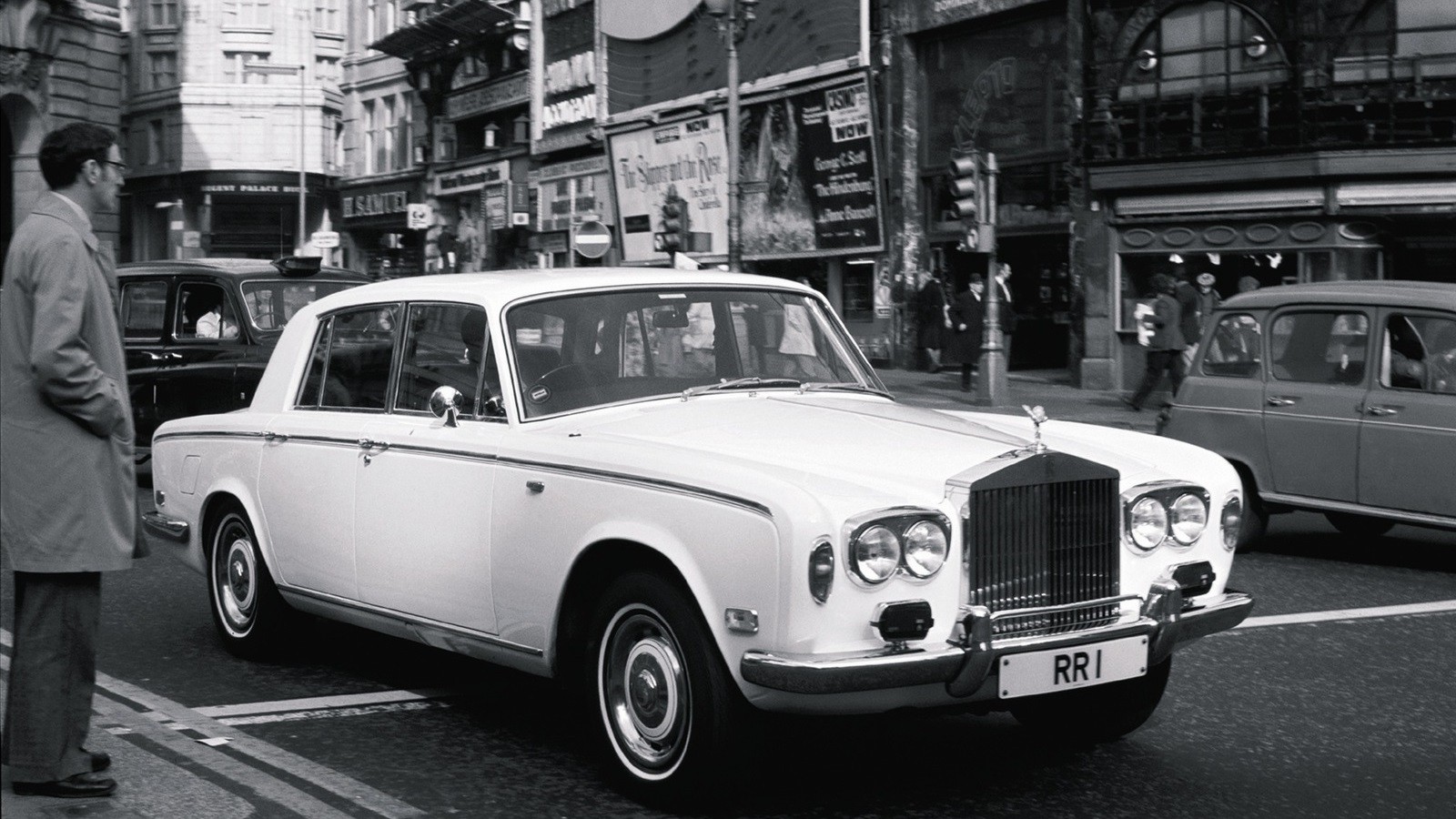
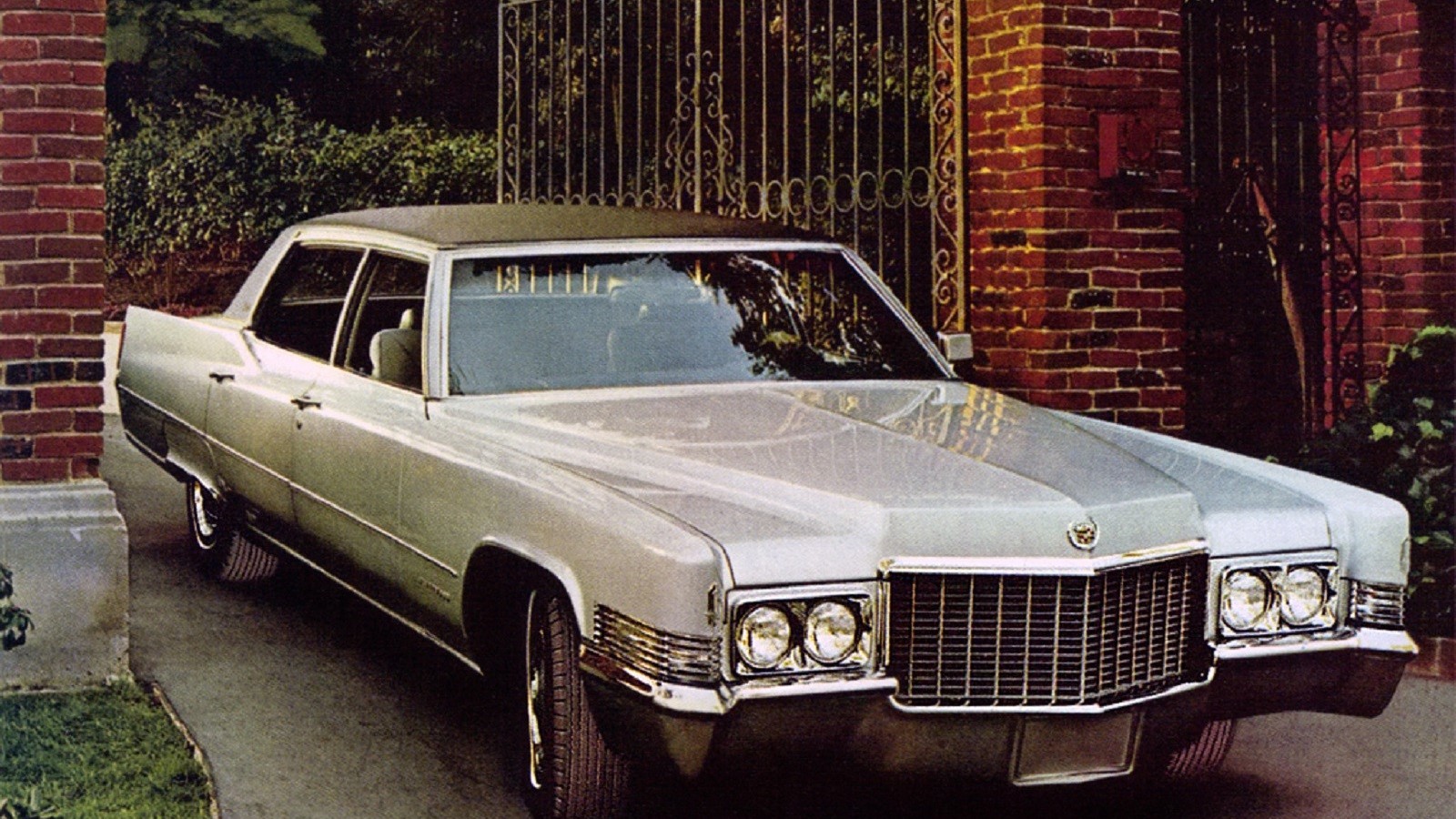
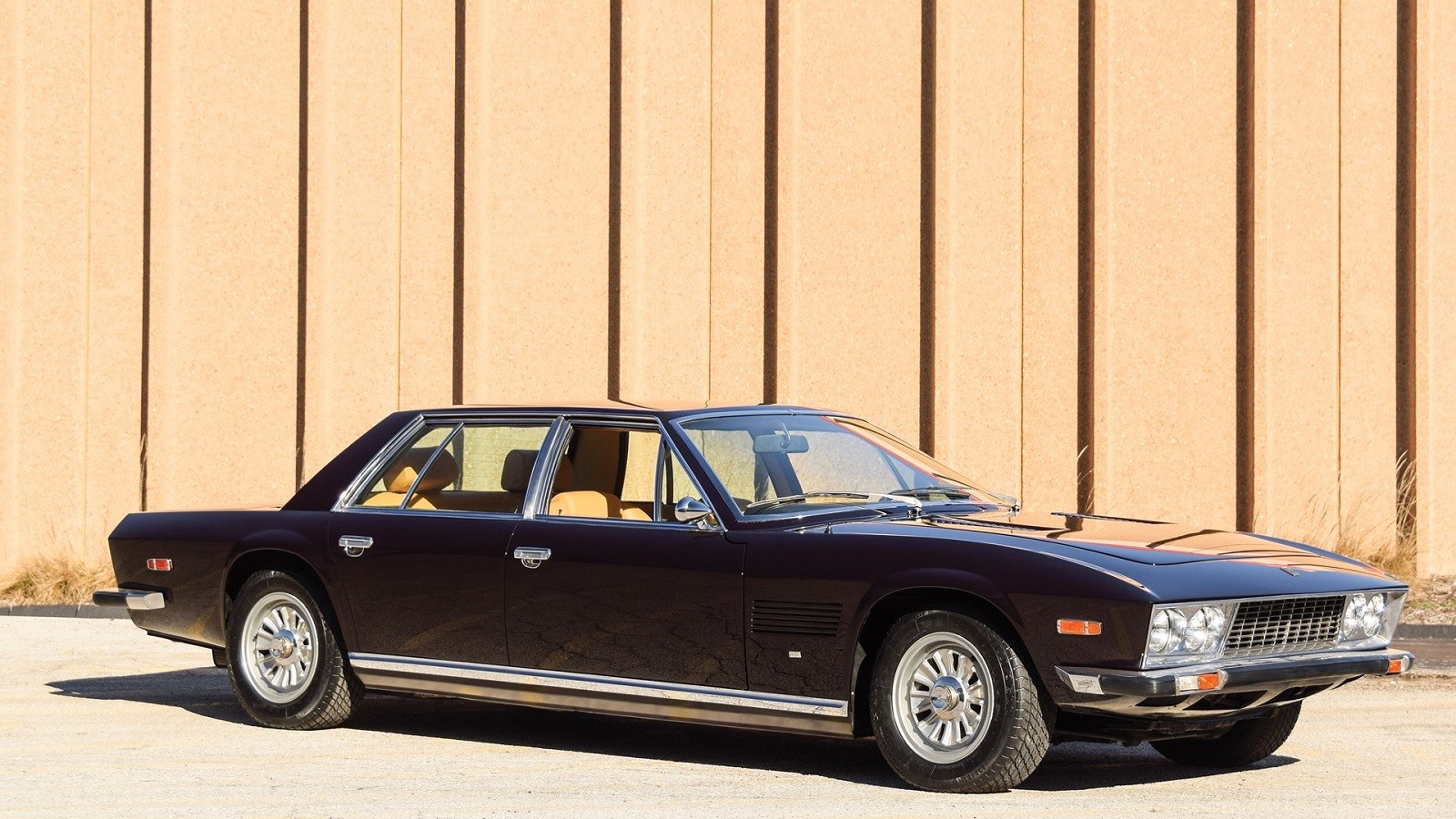
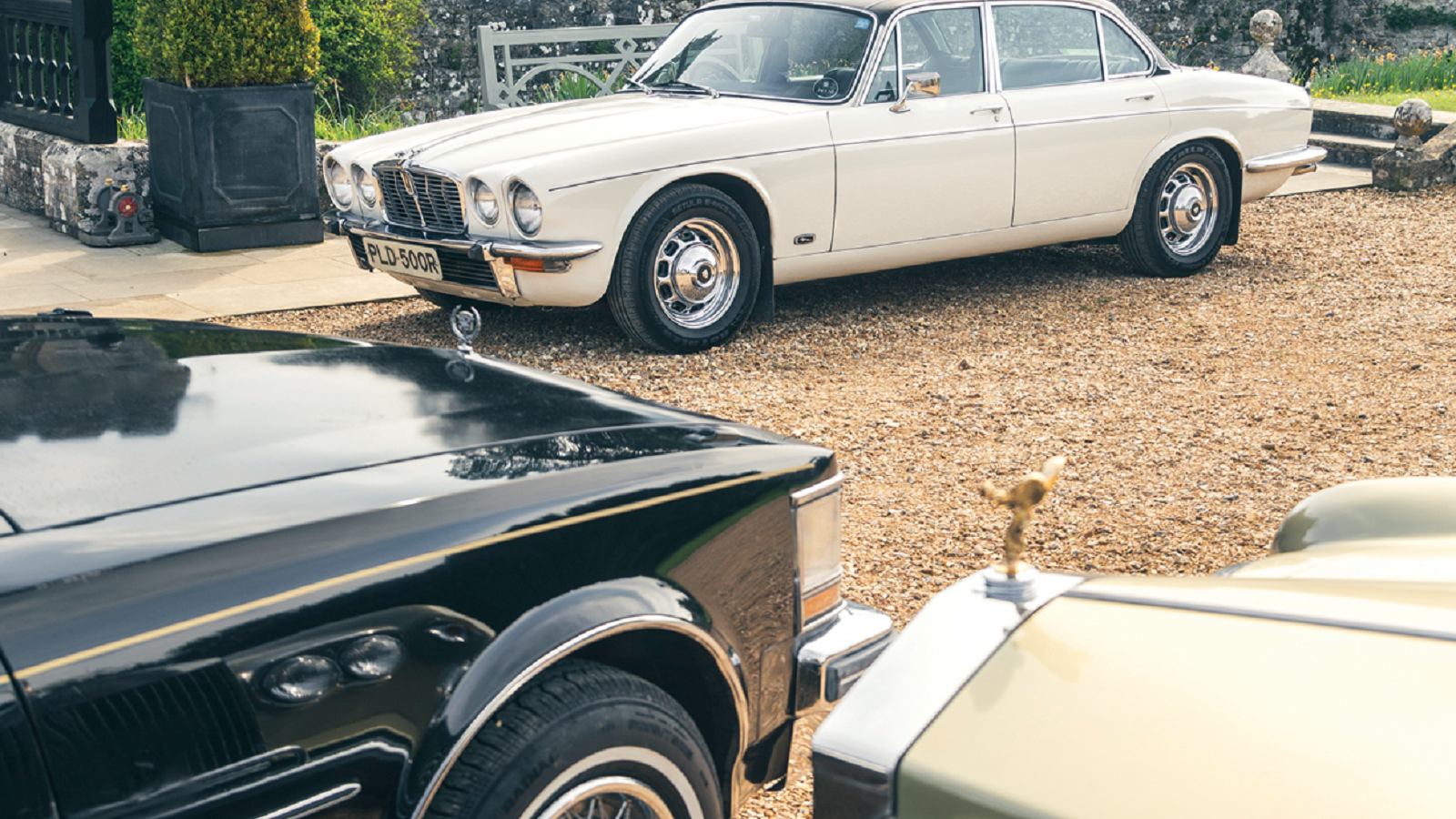
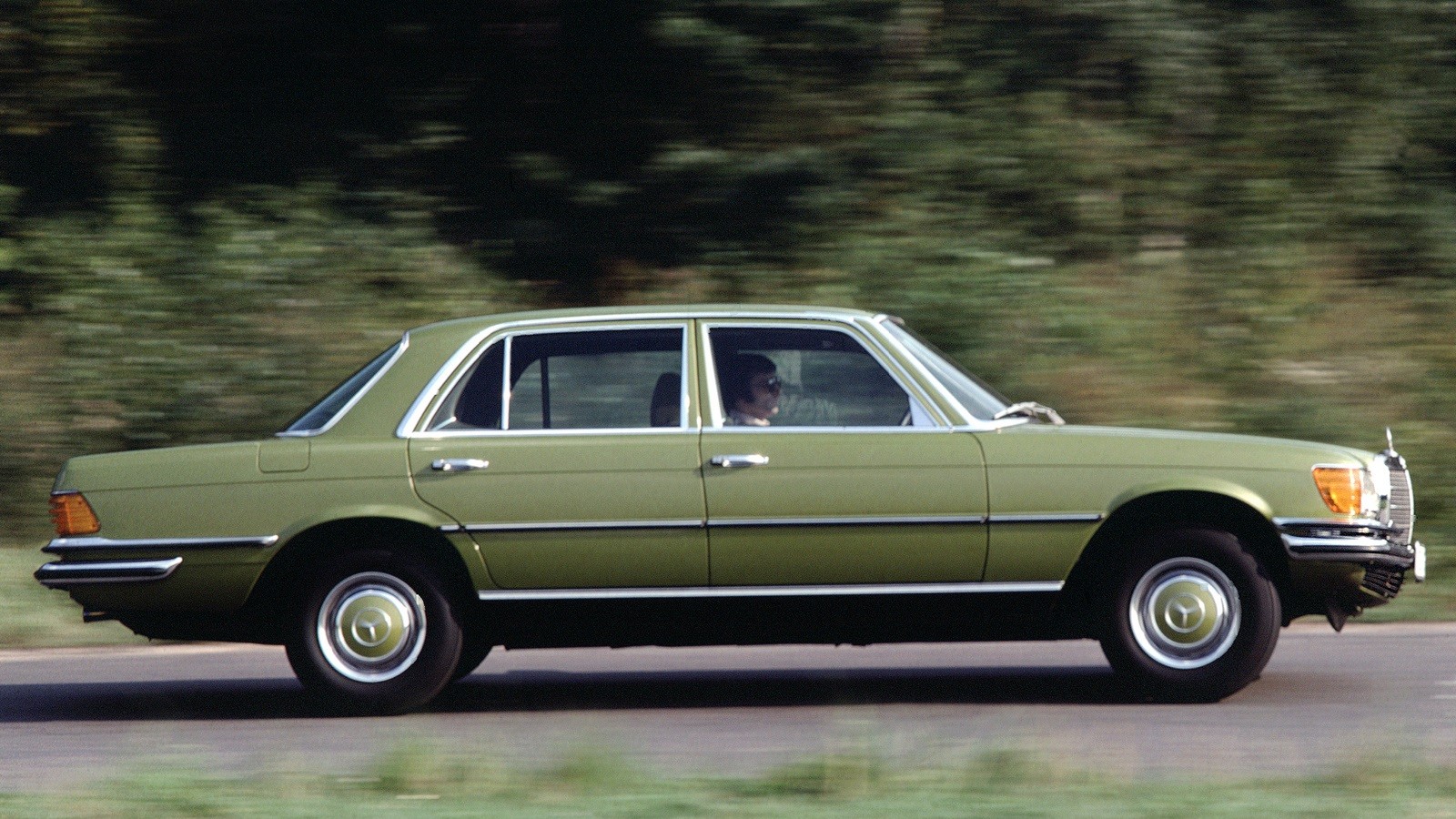
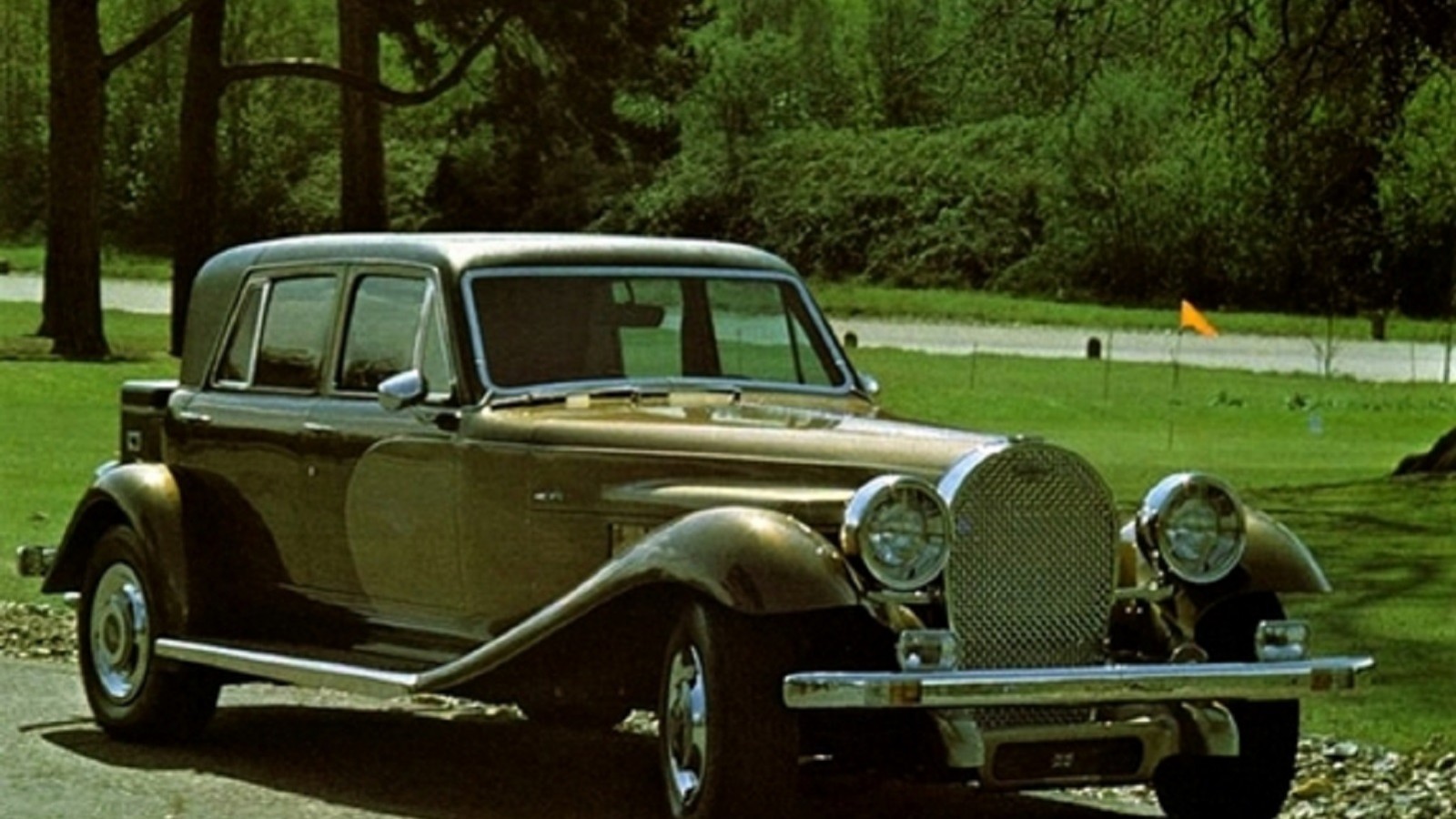
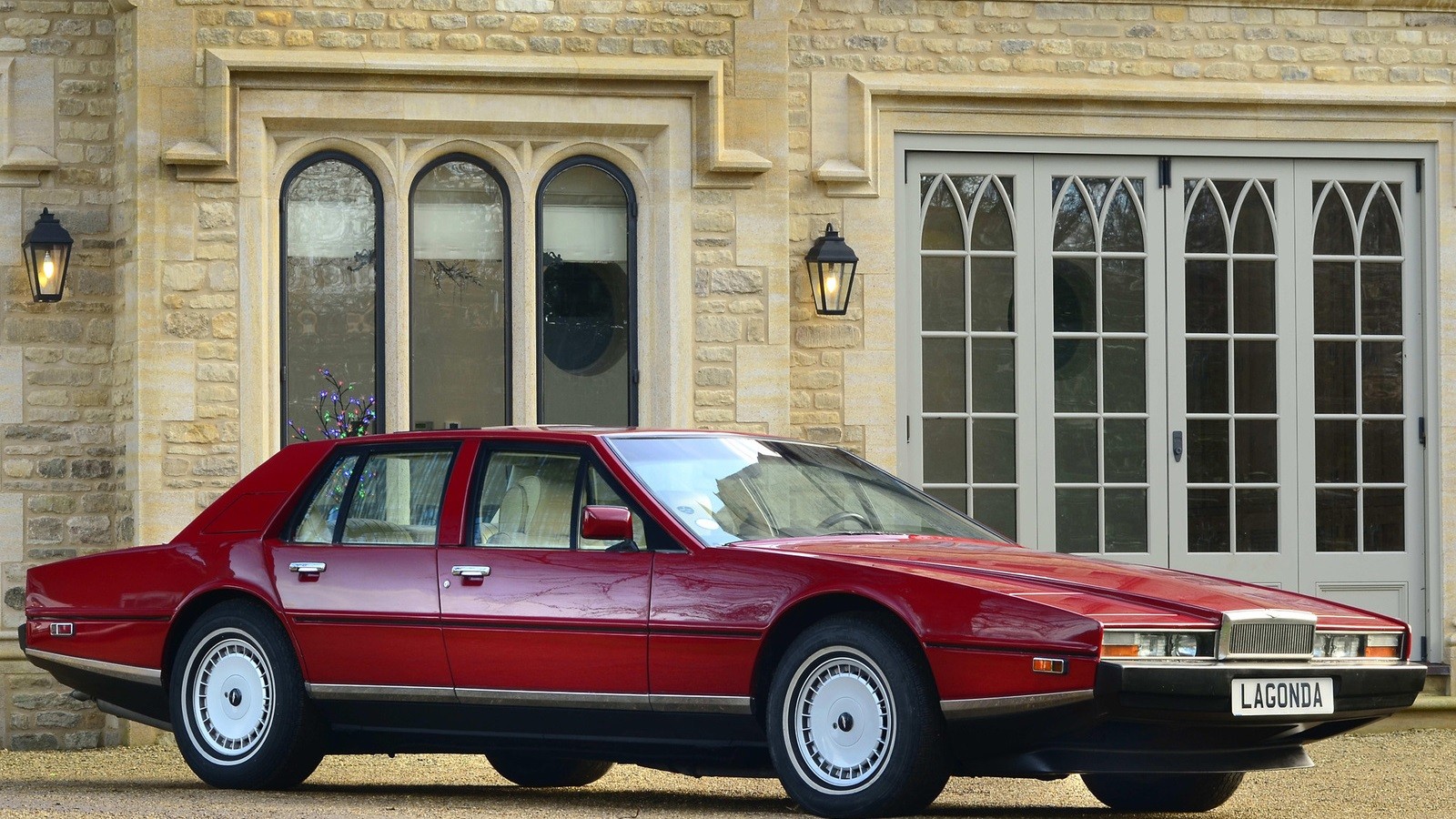
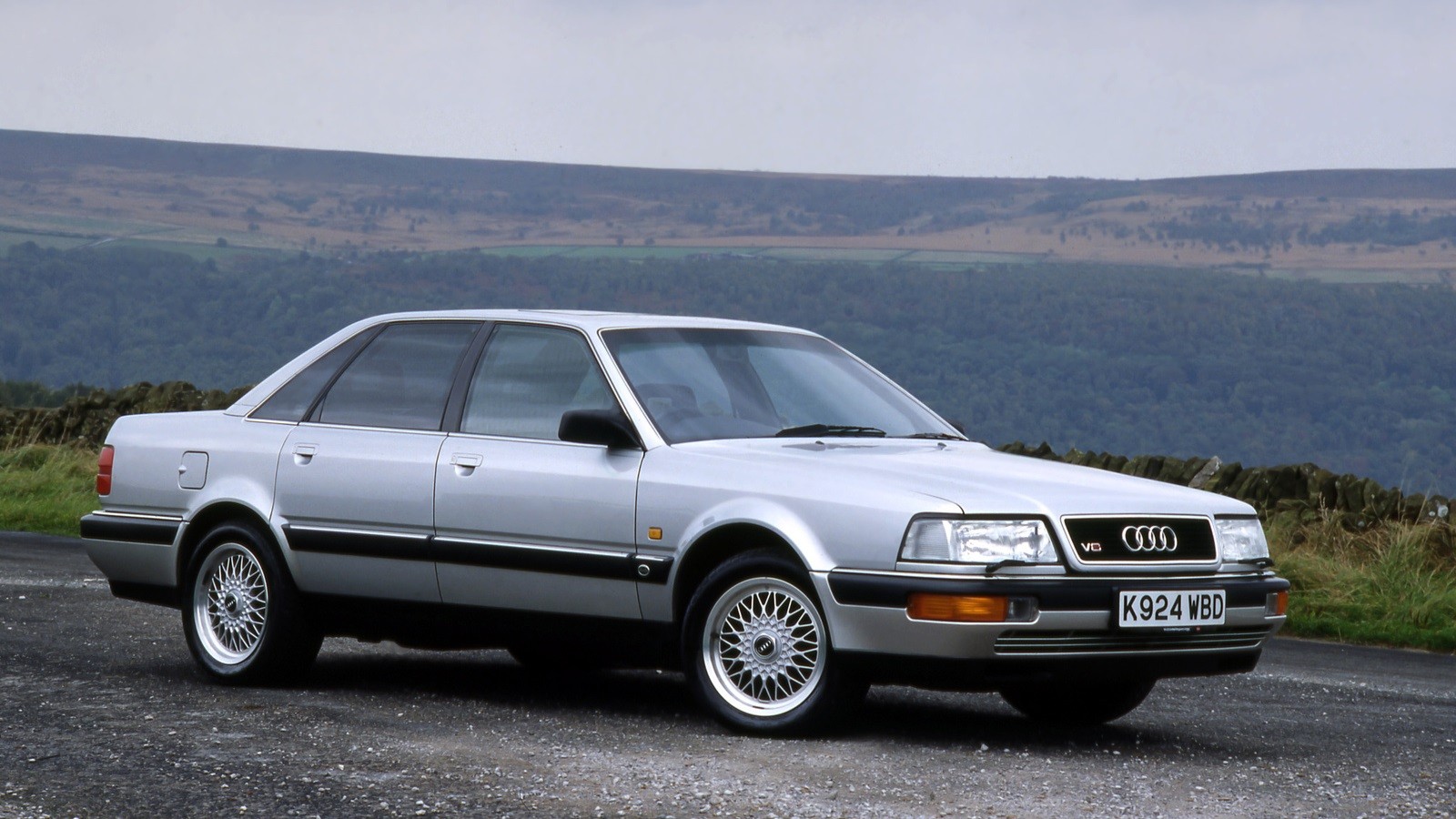
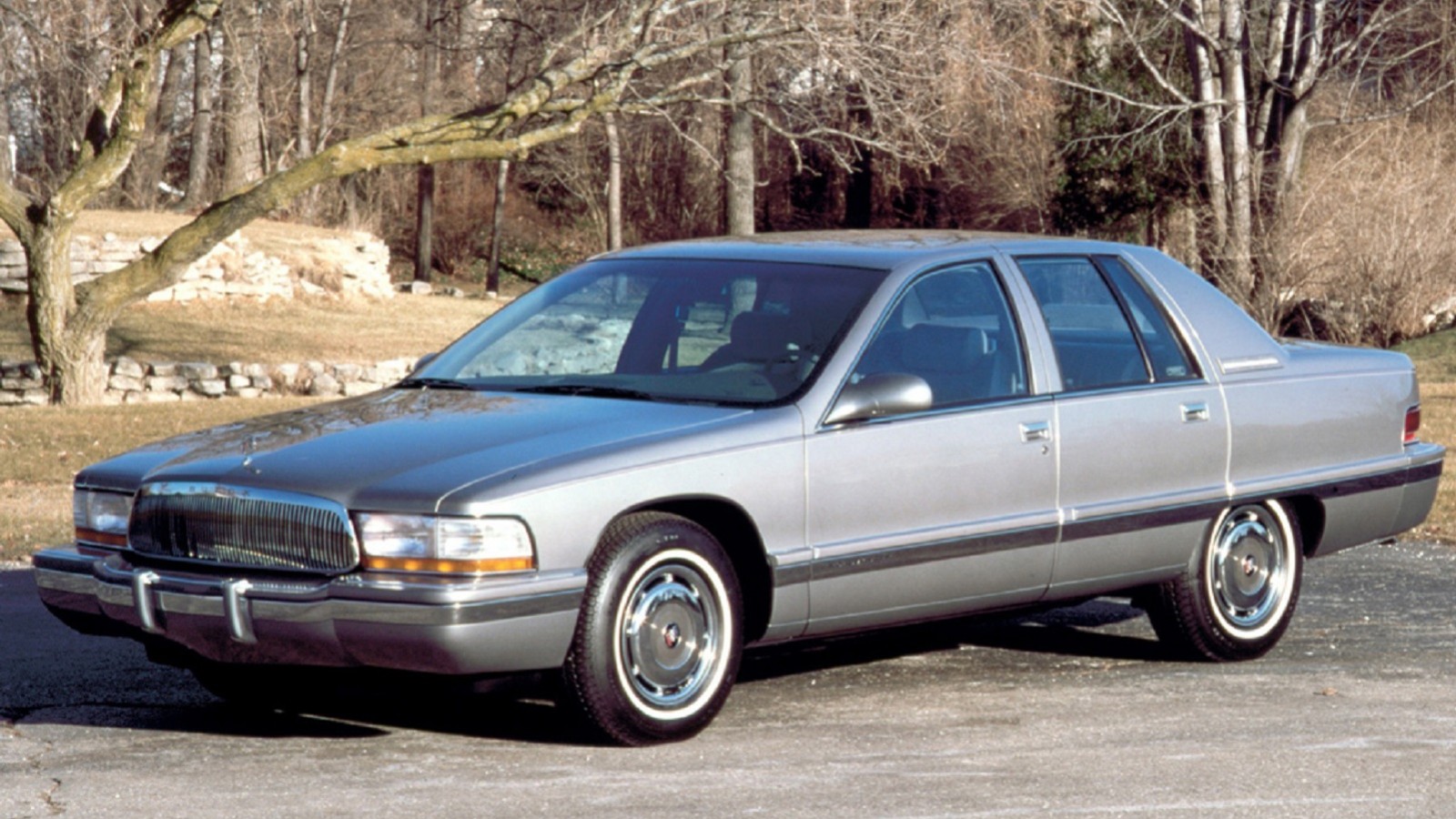
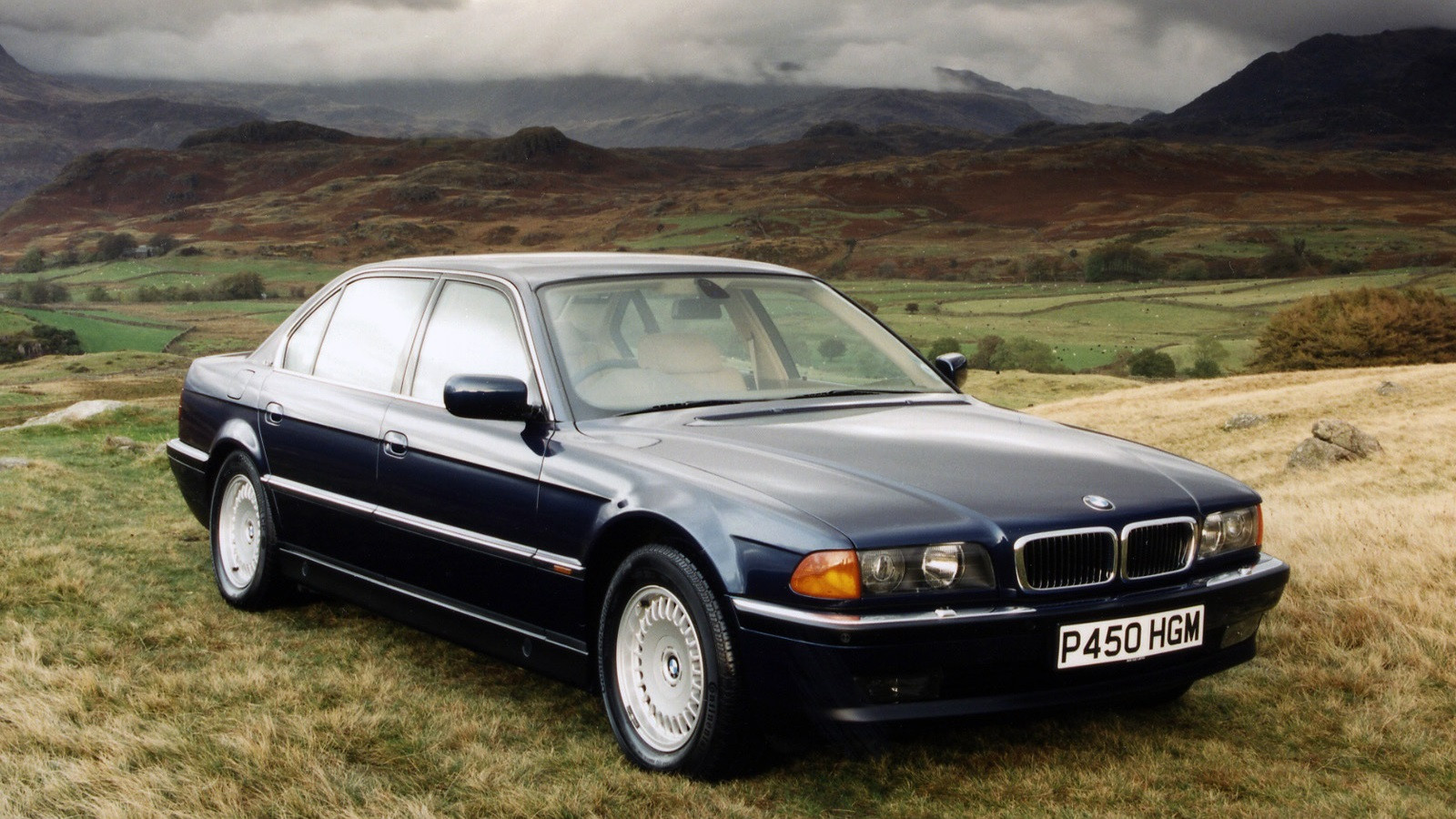
Luxury through the decades
Automotive luxury comes in many guises, from huge interior space to gadget-filled cabins. Whatever makes you feel pampered, all of the cars here were built with the aim of spoiling their owners.
Here’s our pick of some of the most luxurious classic cars ever made, arranged in chronological order.
1. Packard Eight (1924)
Packard ranked alongside the very best in the world for pre-war luxury cars.
Much of this was thanks to insisting on the best components and build standards for its models, as well as the supremely refined 5.9-litre straight-eight engine that sat on rubber mounts to further isolate it from the car’s occupants.
As well as its comforting ride and easy performance, the Packard Eight was noted for using four-wheel brakes. Later in its life, the Eight gained independent front suspension, hydraulic brakes and increased engine capacity, to keep it among the leaders in luxury cars.
2. Duesenberg Model J (1928)
There were no half measures from Duesenberg when it launched the Model J in 1928. Here was a car built with the sole intention of being the most luxurious car in the world, and it arguably achieved this while also falling very short of its original sales targets.
The lucky few who did buy a Model J new enjoyed a silky-smooth 6.9-litre straight-eight engine that could take the weighty Model J to more than 90mph, while offering top-drawer refinement and comfort at the same time.
As every Model J was hand-crafted, buyers could specify almost anything they wanted inside the car, and many came packed with luxury gadgets.
3. Bentley 8 Litre (1930)
The 8 Litre was a last throw of the dice for Bentley in 1930, and it was introduced only shortly before the company was absorbed by Rolls-Royce.
As last hurrahs go, however, the 8 Litre was magnificent thanks to its potent straight-six engine and four-speed manual gearbox that offered sensational performance and hushed refinement.
Most 8 Litres of the 100 produced were fitted with saloon bodywork, though many have subsequently been rebodied with open coachwork. In any form, Bentley guaranteed a top speed of at least 105mph for this model.
4. Rolls-Royce Phantom III (1936)
With the Phantom III, Rolls-Royce introduced a 7.3-litre V12 engine in place of the previous six-cylinder motors for earlier Phantoms. At a stroke, the III offered greater silence allied to more performance, though the complexity of the new engine also made this Phantom less reliable.
As with previous Phantom models, the III was supplied as a chassis to coachbuilders for the owner to select the bodywork. Most were made as touring limousines and the Phantom’s 142in (3600mm) wheelbase lent itself to elegantly sweeping lines and roomy interiors.
5. Lagonda V12 (1938)
Lagonda first showed its new V12 model in 1936, but it took until 1938 for this 4.5-litre machine to reach production.
Only 189 were completed before the outbreak of the Second World War, but they offered the best in comfort, quiet and flexibility from the smooth V12 motor.
Unusually for the period, Lagonda offered its own saloon body for the V12, which was a portent of how luxury cars would be built and sold after the war ended. The V12’s engine was also used in two pared down cars in the 1939 Le Mans 24-hour race.
6. Austin Sheerline (1947)
Austin was keen to offer a luxury car again after the Second World War and the Sheerline was its take on the theme.
While not as elegant as many of its rivals, the Austin had the advantage of being significantly cheaper. It cost £1277 at launch where a contemporary Rolls-Royce was £3250. For this reason, the Sheerline found favour as cost-effective transport for many town mayors, and it was popular with the wedding and funeral trades.
The spacious rear seats offered plenty of comfort and a touch of the high life to their occupants, but the Austin’s suspension and 4.0-litre engine were not as sophisticated as the car’s pricier competitors.
7. Humber Super Snipe (1948)
Humber’s solid reputation for making quality cars was in safe hands with its Super Snipe of 1948.
The headlights may have moved to be incorporated into the front wings compared to the pre-war model, but this large saloon remained a stalwart of upright society.
The rear of the Super Snipe provided ample room for three adults to sit in comfort, which made this British machine popular as transport for civic duties and politicians – and even the BBC.
The 1953 replacement Super Snipe was scaled back in size and ambition to become an executive car rather than an outright luxury machine.
8. Imperial Sedan (1955)
Until 1955, Imperial was a model name within the Chrysler portfolio, but it became a fully fledged brand in its own right in this year. Core to the Imperial company was the Sedan that used a 331cu in (5.4-litre) V8 similar to the Chrysler C-300’s but detuned to c250bhp.
With power steering, power brakes and an automatic gearbox as standard, the Sedan was better equipped than many more expensive European rivals.
A notable feature of the Imperial Sedan in its first two years of production are the ‘gunsight’ rear lights that stand proud of the rear wings. This was claimed to be a safety aid and to help make it easier for the driver to gauge the rear of the lengthy sedan when reversing.
9. Citroën DS19 (1955)
Citroën’s take on luxury was to isolate the driver almost completely from however rough the road surface was. It made the DS eerily smooth on any type of road, though the four-cylinder engine inherited from the Traction Avant was less impressive.
The unrivalled smoothness of the DS was achieved using hydropneumatic suspension, so the car was suspended by gas and air rather than anything as gauche as steel springs.
This system also powered the steering, clutch and brakes in the DS, as well as offering an adjustable ride height. It was so good that Rolls-Royce adopted it for its Silver Shadow a decade later.
10. Tatra T603 (1955)
Tatra continued as a maker of luxury cars even when it fell behind the Iron Curtain, with its vehicles usually reserved for high-ranking politicians.
Some T603s were exported and the model offered a unique take on the luxury saloon with the wind-tunnel-tested body shape that helped make the cabin very quiet.
Further hush inside the T603 was provided by mounting the engine at the rear of the car, so the 2.5-litre V8’s noise was lost behind it. Like many luxury cars of the period, the Tatra’s gearshift was on the steering column to allow for three-abreast seating in the front.
11. Facel Vega Excellence (1958)
By most objective measures, the Facel Vega Excellence was a bit of a lemon. But if you like the taste of lemon, you’ll love this vast four-door saloon as much for its quirks as the opulence it offered.
Buyers could order such rare treats as an automatic gearbox to deal with the Chrysler-sourced V8 engine, and you could also have power-assisted brakes and steering, electric windows and air conditioning.
Facel Vega knew how to give a luxury car the drama its wealthy clientele demanded, so the Excellence came with clap-hand doors with pillarless windows. However, the huge cost of the Excellence meant only 156 were sold during its six-year production run.
12. Daimler Majestic Major (1959)
The name said it all, because this Daimler saloon was intended to be regally better than any of its competitors.
However, it also happened to be a whole lot quicker thanks to Daimler planting its new 4561cc V8 under the bonnet. This earned the car Majestic Major the reputation of being the fastest funeral car on the road.
An automatic gearbox was standard and power steering coped with the car’s substantial 1778kg weight. Fortunately, the Daimler also handled well, so the driver could enjoy the power and 120mph top speed while those in the back revelled in traditional wood and leather luxury.
13. Lincoln Continental (1961)
For 1961 at Ford, fins were out and sharp-edged cool was in for the flagship Lincoln saloon. This vast four-door may have been smaller than its predecessor but it oozed cool appeal, helped by its clap-hand doors, clean flanks, and a cabin brimming with gadgets such as electrically powered front-seat adjustment.
The gliding ride made the Lincoln ideal for wide open US roads, while the huge 430cu in (7.0-litre) V8 with automatic gearbox delivered lazy, effortless power.
Ford’s confidence in this new pinnacle of its range was underlined by the Lincoln being the first US-made car to be sold with a bumper-to-bumper, two-year, 24,000-mile warranty.
14. Maserati Quattroporte (1963)
Maserati’s Quattroporte enjoyed the distinction of being the only Italian four-door luxury saloon on the market at its launch.
It was also the first car from the firm to use its new 4.1-litre V8 engine, later rising to 4.7-litres, which ensured the Quattroporte lived up to the company’s sporting reputation.
Inside, the model was fitted with soft leather, wood trim, and all of the contemporary trappings of luxury such as air conditioning, electric windows, a radio and an optional automatic gearbox in place of the standard five-speed manual.
15. Mercedes-Benz 600 (1964)
On arrival in 1964, there were few who would argue with the Mercedes-Benz 600 being the best luxury car in the world.
It offered sumptuous seating and space in its elegantly restrained cabin, while driving comfort was assured thanks to its standard air suspension that kept the big Mercedes level no matter how uneven the road was.
A vacuum system powered the door locks and windows, while a 6.3-litre V8 meant the 600 could hit 127mph on the unrestricted motorways and autobahns.
The 18ft (5.49m) long standard 600 saloon was more than enough for most buyers, but you could order the outrageous 20ft (6.1m) Pullman as the ultimate in luxury travel taken a step further.
16. Rolls-Royce Silver Shadow (1965)
The John Blatchley-styled Silver Shadow was a bold departure for Rolls-Royce to keep it at the forefront of the luxury car world.
It ushered in a clean-flanked saloon shape, with unitary construction underneath for the first time on a Rolls. It also came with hydropneumatic self-levelling suspension for a wonderful ride quality.
Inside, the Silver Shadow was every bit the opulent, though restrained, car its customers expected. There was plenty of leather, wood and Wilton carpets, and the Shadow gained standard air conditioning in 1969 long before this was ever widely offered on most other luxury cars.
17. Cadillac Fleetwood Brougham (1970)
Cadillac has a long line of luxury cars to its name, but its most opulent came at a time when, through emissions regulations, its engines were notably down on power. The Fleetwood Series Sixty-Special Brougham was a huge slice of comfort, gadgets and button-down leather seats.
It’s telling that Cadillac described this model as its ‘most luxurious owner-driven sedan.’ If you wanted even more space and floating ride, you had to move up to the coachbuilt stretched limousine versions.
Cruise and climate control were included with this model to deal with long drives in the US, but the 7.7-litre V8 with a claimed 375bhp gave way to an 8.2-litre V8 with just 205bhp in 1975.
18. Monteverdi High Speed 375/4 (1970)
Monteverdi’s 375/4 was styled by Frua and built by Fissore as a fast, luxury saloon for the Jet Set.
The fact only 30 were made says a lot about the cost of this 150mph four-door, four-seater, but for those who bought one it offered exclusivity and plenty of luxury within its roomy cabin.
Alongside electric windows, air conditioning and cruise control, you could order a drinks cabinet and television for rear-seat passengers.
Under the 375/4’s enormous bonnet was a 7.2-litre V8 from Chrysler.
19. Jaguar XJ12 (1972)
In 1972, Jaguar made every other luxury car maker’s products look overpriced with the arrival of its XJ12.
This 5.3-litre V12-powered saloon took the already brilliant XJ’s supreme ride, handling and refinement, and made it even better thanks to the engine’s eerie silence. This was just as true when creeping around town as it was when closing in on the XJ12’s near-150mph top speed.
Jaguar offered a long-wheelbase XJ12L shortly after the standard car’s introduction, providing more rear legroom. The cabin gave Jag’s usual blend of wood and leather comfort, while the only notable downside of this model was fuel economy that averaged just 12mpg.
20. Mercedes-Benz S-Class W116 (1972)
Introduced late in 1972, the 116-series Mercedes-Benz S-Class went on to win the 1974 Car of the Year award almost at a canter.
Where previous winners had all been worthy mainstream cars, here was a luxury car that made cost irrelevant as it was simply so good at everything it did. Ride, comfort, quiet, handling and that Germanic take on luxury all combined to make this S-Class arguably the best car in the world at the time.
The 280SE came with a manual gearbox as standard, but the 350 and 450 V8-powered versions had an auto. They also had the option of a longer wheelbase in the SEL model to give more rear legroom.
For those wanting the ultimate S-Class, the 450SEL 6.9 came with a potent V8 engine as well as hydropneumatic self-levelling suspension.
21. Panther De Ville (1974)
The Panther De Ville was built as a pastiche of 1930s luxury cars, with plenty of influence from the Bugatti Royale in its looks.
It was an entertainingly brash take in terms of appearance, but underneath there was serious engineering with Jaguar suspension and engines, including the option of the V12.
Inside, the De Ville could be trimmed however the buyer wanted, with wood, leather and thick carpets all standard fare. Customers could also add a drinks cabinet, climate control and TV.
22. Aston Martin Lagonda (1977)
William Towns styled the wedge-shaped Lagonda and gave Aston Martin the most striking luxury saloon of the period. Its low-slung appearance was matched by power from Aston’s 5.3-litre V8 that could propel the Lagonda to a maximum of 143mph.
However, the Lagonda was also every inch the luxury car with its four-seat cabin trimmed in leather, wood and rich carpeting.
Air conditioning, cruise control and electric windows were all included, while a TV was a popular option. You also got a digital dashboard in the earlier cars that was as sophisticated as it was unreliable.
23. Audi V8 (1988)
Before the Audi A8 came the V8, which was the first car from the German maker to combine its quattro all-wheel-drive system with an automatic gearbox.
It started with a 3.6-litre V8, which was replaced by a 4.2-litre motor in mid-1991. Performance was suitably brisk and the V8 offered traction that no other luxury car could in slippery conditions.
Audi didn’t stint inside the V8 either, which came with automatic climate control to keep the cabin temperature exactly where you wanted it. It also had cruise control, leather seats with electric adjustment for the front pair, and a Bose stereo, plus you could have a built-in mobile phone.
24. Buick Roadmaster (1991)
The Roadmaster was Buick’s top-line luxury car and, when the company resurrected the name in 1991, it was a luxury saloon in the mould of the true US land yachts.
Long, wide and elegant, the Roadmaster saloon and its huge estate sibling gave the likes of Cadillac and Mercedes-Benz much to worry about.
The interior of the Buick focused on thickly padded seats for supreme comfort, masses of space in the front and back, and plenty of standard equipment such as climate control, electric seats and cruise control.
Buick also used 5.0- and 5.7-litre V8 engines, so the Roadmaster had a turn of speed to match its opulence.
25. BMW 7 Series (1994)
A strong case could be made for any generation of BMW 7 Series as a great luxury car, but the E38 model introduced in 1994 is possibly peak 7 Series.
Its sleek lines spoke quietly of wealth and power, while the engines ranged from decently frugal six-cylinder units to the effortlessly quick and smooth 5.4-litre V12.
Inside either the standard- or long-wheelbase versions of this 7 Series, BMW went to great lengths to make it as refined as possible.
Deep carpets were matched by soft leather upholstery, as well as wood trim. Along with the by-then expected luxury essentials of climate control, cruise control and a mobile phone, the E38 was the first BMW to be offered with satellite navigation as an option.
